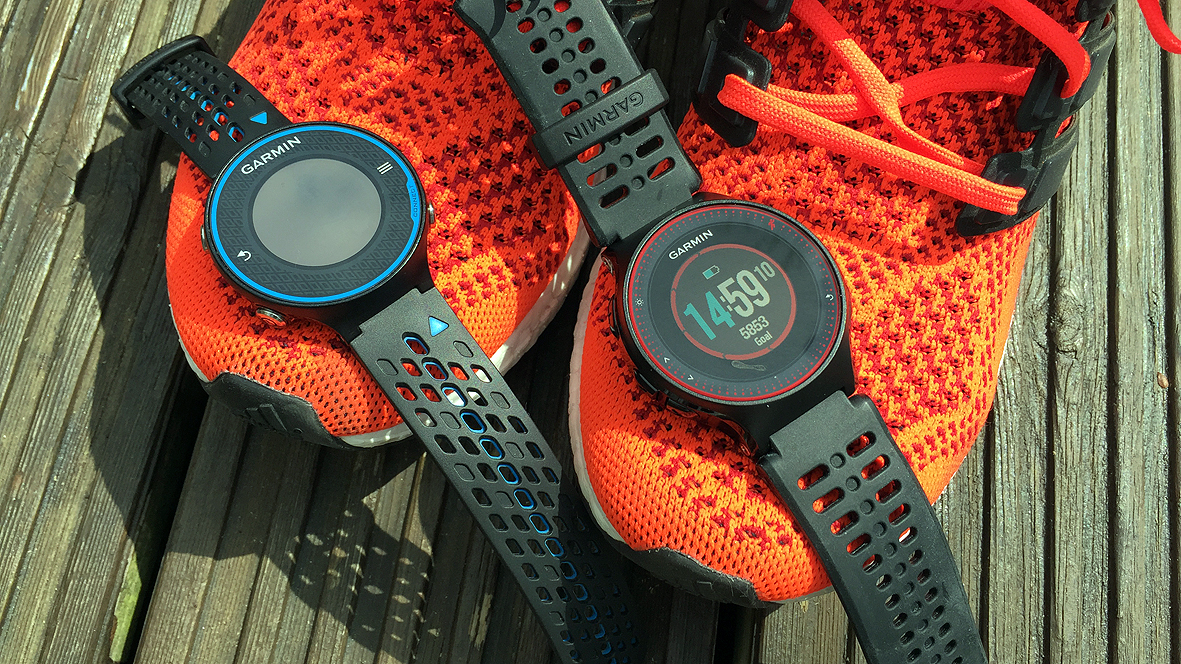Why you can trust TechRadar
Unsurprisingly where the Forerunner 225 really comes into its own is heart rate tracking.
The Forerunner 225 uses the latest Mio optical heart rate sensor to provide chest-strap-free heart rate zone training. The first question everyone asks about OHR devices is whether you can rely on their accuracy vs the old-school ECG chest strap.
Let's deal with the tech itself first. The closer you place it to the heart, the more accurate it's likely to be. However, while chest straps usually offer better accuracy, it doesn't mean that all chest straps are better than optical sensors. If you factor in convenience, optical has the edge here. A chest trap that's left at home isn't much use and some people simply can't get along with strapping stuff around their ribs.

If you're going for wrist-based tracking then you need to bear in mind that not all optical sensors are created equal. The OHR works by shining LED light into the blood capillaries in your wrist, picking up the differences in light density when your blood pulses. Lots of things can interfere with accuracy here, like light leaking in, how close the sensor fits to the skin and tension in the wrist.
Garmin has been smart in opting for Mio's OHR tech as it offers the leading wrist-based tracking accuracy, and a sensor that is even more up to date than the one in their Mio Fuse. So the 225's optical smarts ought to be the most accurate out there.
Up against a Polar M400, which uses a chest strap, the Garmin tracks on average anywhere up to 5BPM higher than the Polar and often struggles when the pace is dropped from a run to a very slow run or a walk. It simply takes longer to react and for the heart rate to drop. But this is something you'll see in the TomTom Cardio Runner and the Adidas SmartRun too.

The difference between an aerobic capacity training run and a threshold session hangs on a couple of beats per minute and if you're looking for 100 per cent accuracy in training then the 225 probably isn't your best bet. But if you're happy with a heart rate training guide, this is a good option.
Sign up for breaking news, reviews, opinion, top tech deals, and more.
Garmin Connect web tools
With the likes of Nike+, Endomondo and Strava offering brilliant app and web-based tools, Garmin has been forced to up its game. While its GPS tracking has always been strong, the analysis, planning and social tools were pretty poor. Syncing was convoluted and the data presentation was largely impenetrable for the running mortals.
The arrival of the upgraded Garmin Connect has gone a long way in solving these problems, with wireless syncing and better design on its stats pages.
The web tools essentially provide the watch with extra skills. From off-the-shelf training plans to route finders, Connect is growing into an accessible and powerful tool. There's still work to be done on the usability but it offers a compelling and competitive range of features.
Alongside reviewing all of your run data in nicely scannable single pages, you can monitor trends with week, month and year views. You can find expert training plans for various distances up to a marathon, though these could be easier to decipher and be personalised. For example, it'll recommend 40 minutes cross training but give no details as to what that should entail.

That said, if you have the time and the knowledge, you can create your own workouts simply and quickly. These can then be built into a workout calendar and synced to your device via the Connect smartphone app and then via Bluetooth (or direct via USB to the device.)
Connect has also co-opted some of the Strava cleverness to make your running more social. There's a Segments feature that lets you attempt to run roads and routes faster than other Garmin users and can be automatically synced with Strava so you don't have to miss out on being part of that community.
Garmin Connect smartphone app
The smartphone app, available for Android and iPhone, is a bit of a disappointment. While it's great for reviewing your recent activity, there's not much you control via the app.
You can search for segments near you using GPS, and you can find and add other Garmin users as connections but you can't do important things like create an interval workout to send to your Forerunner. You can see community challenges you've already joined, like the most miles run in a given month but you can't find and join new ones.
One brilliant feature the Garmin Connect smartphone app does enable is Live Tracking. It works pretty much like the live trackers you get online for the major marathons and lets fellow runners, friends and family follow your runs in real time via a shared web link.

It does this by piggy-backing your smartphone's connection to keep people constantly updated on where you are. It's a great feature for anyone who might be meeting a running buddy along a route or who wants to let their family know they're going to be late for Sunday lunch.
They may not be as glossy as Nike+ and we're still missing the option to create workouts on the fly, but Garmin's web and app-based tools have improved.
